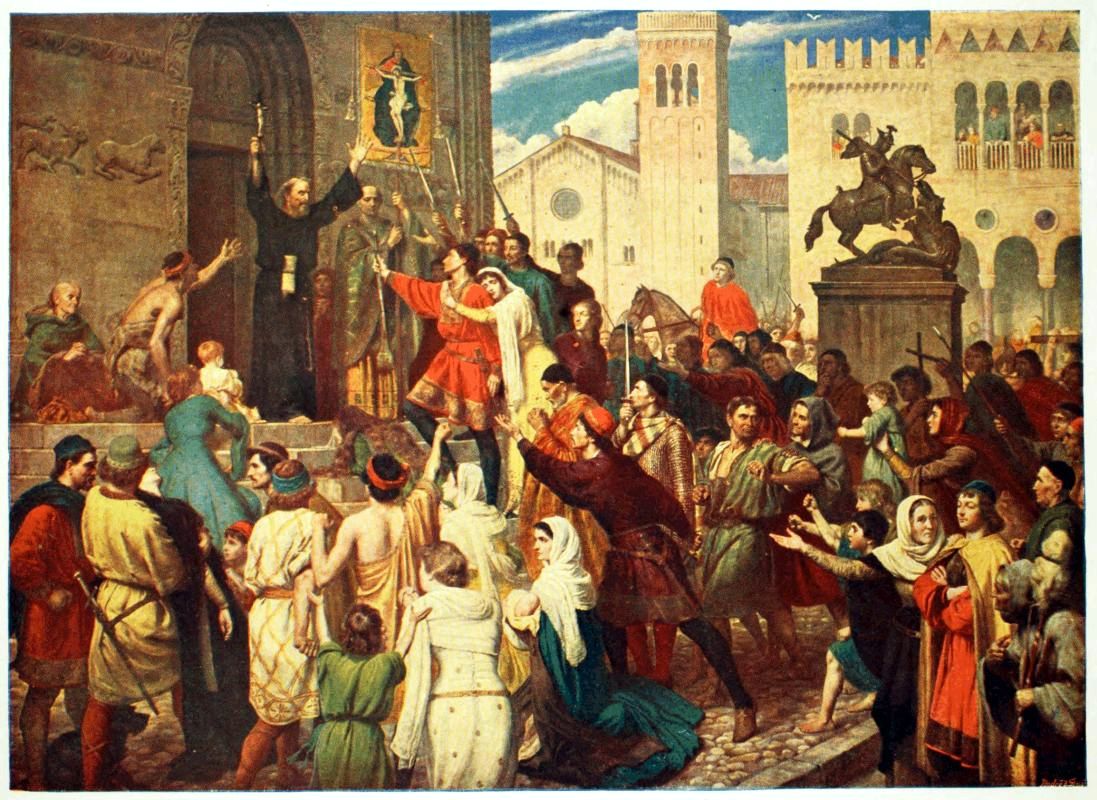Each crusader had a motivation for joining the People’s Crusade, an expectation for how it would go, and ultimately an outcome after the crusade ended. Understanding the perspectives of those who took the journey ultimately helps us understand the influence of the People’s Crusade, as well as if we can view this foundational period as a success or failure.

Who was involved?
Christians from all over Europe took part in the People’s Crusade. Franks, Swabians & Bavarians (modern day Germany) and Lotharingians (modern day Netherlands/Belgium) were the majority. The appeal of the crusade was the idea of prosperity, leaving a state of poverty and economic strife; because of this, peasants were the largest demographic(Kostick 100.) There was no desire or need, from their perspective, to wait for economic support to begin the journey. This was an opportunity to finally attempt to leave a life of struggle and possibly attain levels of power, influence, and wealth. This was a group of mainly men, but a few women, children, and clergy joined the journey as well. There were some knights involved, who brought high levels of organization through financial capabilities but in small numbers.(Kostick 95,96.) Inspiration from leaders like Peter the Hermit and Pope Urban II motivated these pilgrims to fight the crusades to protect Catholic power in Europe from Muslims in the Holy Land, but did not hesitate to begin.
Who was affected?
Jews were the most affected group during the crusade. As the crusaders traveled alongside the Rhine river, each stop resulted in in extreme violence. Crusaders had no concrete plan, timeline, or procedures to abide by; they believed that there was no need to wait for a destination or target to attack the enemy(Madden 18.) Jews were given the choice to covert to Christianity or ultimately lose their life, creating a difficult ultimatum. It resulted in an incredibly large amount of Jewish deaths, still debated to be between 2,000 and 12,000 lives lost. This mass, immediate violence began in Cologne and continued throughout the six months of crusading(Peters 111.) Synagogues were burned, valuables were stolen, and chaos ensued. There was also conflict internally between crusaders, as each person had their own idea and motivation for why/how they were crusading. However, the desire for wealth and power overcame the goal of saving these cities for Christian leadership, resulting in an unsuccessful crusade.
Motivation vs Outcome
The plan to take power back into Christian hands through the crusade did not occur, making it apparent to why this first segment of the crusade is often overlooked. The lack of strong leadership and strong personal motivations took ahold and resulted in mass destruction of cities and massacres of people. There was short term satisfaction for these pilgrims in the looting and the power gained from it, but long term no foundation was created in order for this specific journey to continue. The ultimate battle of the crusade was a clear representation of how the motivations of the crusaders varied from the actual outcome of the six month period. However, this was extremely beneficial for the Christians still in Europe. It was a model of what not to do on the crusade, showing the importance of leadership, preparation, and having a plan.
References
Kostick, Conor. “PAUPERES AND THE FIRST CRUSADE: FROM THE PREACHING OF THE CRUSADE TO THE RISE OF THE VISIONARIES.” In The Social Structure of the First Crusade, 95-130. LEIDEN; BOSTON: Brill, 2008. Accessed February 18, 2020.
“Peter the Hermit and the “Crusade of the People” (March–October, 1096).” In The First Crusade: “The Chronicle of Fulcher of Chartres” and Other Source Materials, edited by Peters Edward, 102-51. University of Pennsylvania Press, 1998. Accessed February 18, 2020.
Madden, Thomas. “The First Crusade.” In The Concise History of the Crusades, 1-15. Rowman & Littlefield 2014. Third ed.